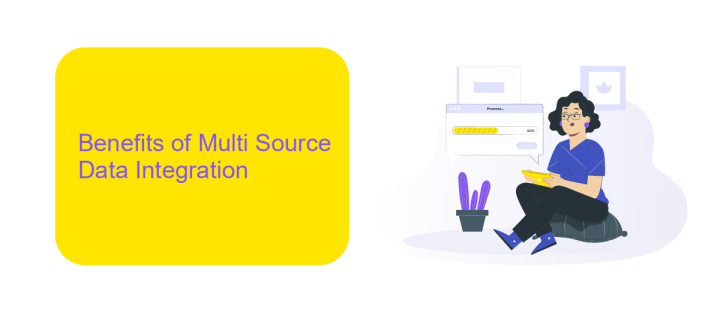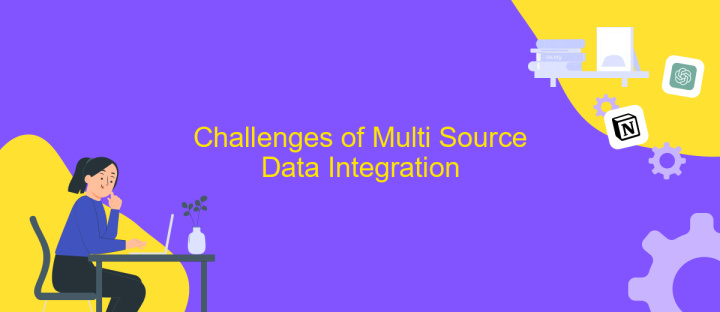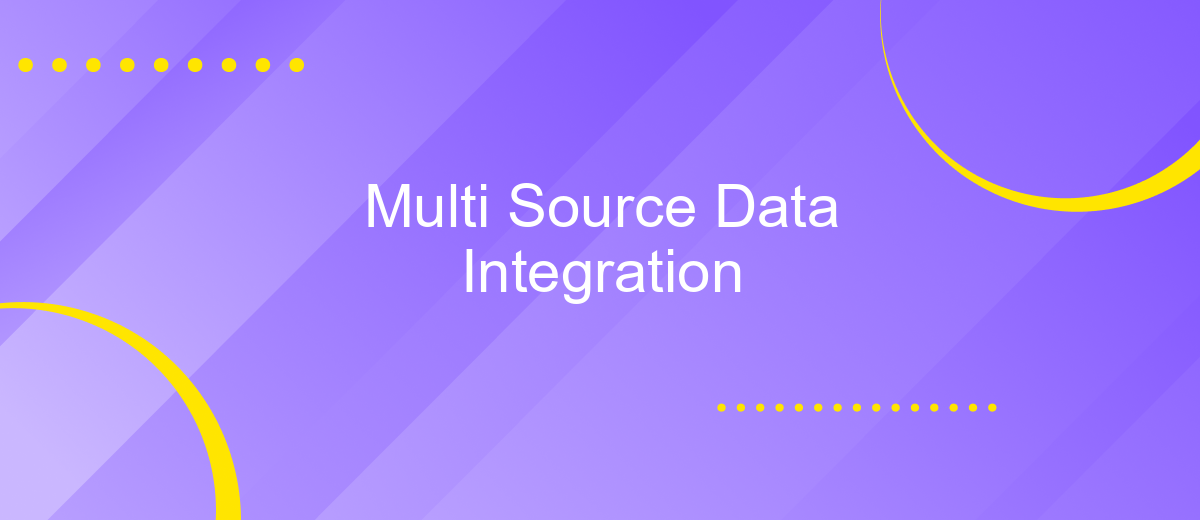Multi Source Data Integration
In today's data-driven world, integrating information from multiple sources is crucial for comprehensive analysis and informed decision-making. Multi-source data integration combines diverse datasets, enhancing data accuracy and providing a holistic view of complex systems. This article explores the methodologies, challenges, and benefits of merging data from various origins, highlighting its importance in modern analytics and business intelligence.
Introduction
In today's data-driven world, the integration of data from multiple sources has become a critical task for organizations seeking to gain comprehensive insights and make informed decisions. Multi-source data integration involves the process of combining data from different origins, formats, and structures into a unified view. This approach not only enhances data quality but also enables more accurate analysis and reporting.
- Enhanced data accuracy and consistency
- Improved decision-making capabilities
- Comprehensive data analysis
- Streamlined data management processes
As organizations continue to accumulate vast amounts of data from various sources, the importance of effective data integration cannot be overstated. By leveraging multi-source data integration techniques, businesses can unlock the full potential of their data, leading to better strategic planning and operational efficiency. This article explores the key methodologies, challenges, and benefits associated with multi-source data integration, providing a roadmap for successful implementation.
Benefits of Multi Source Data Integration

Multi Source Data Integration offers numerous benefits, including enhanced data accuracy and consistency. By consolidating data from various sources, organizations can eliminate redundancies and discrepancies, leading to a single source of truth. This unified data view facilitates better decision-making and strategic planning, as stakeholders have access to reliable and comprehensive information. Furthermore, it streamlines data management processes, reducing the time and effort required to handle multiple datasets manually.
Another significant advantage is the ability to gain deeper insights through comprehensive data analysis. Integrating data from diverse sources allows businesses to uncover patterns and trends that might be missed when analyzing isolated datasets. Tools like ApiX-Drive simplify the integration process by automating data synchronization across different platforms, ensuring seamless and real-time data flow. This not only enhances operational efficiency but also enables organizations to respond swiftly to market changes and customer needs, ultimately driving growth and competitive advantage.
Challenges of Multi Source Data Integration

Integrating data from multiple sources presents numerous challenges that can complicate the process and affect the quality of the final dataset. These challenges stem from the diversity of data formats, the heterogeneity of data sources, and the complexity of data relationships.
- Data Quality: Ensuring consistency and accuracy across various data sources can be difficult, as each source may have different standards and levels of data quality.
- Data Format Compatibility: Different sources often use different data formats, making it necessary to convert and standardize data before integration.
- Scalability: As the volume of data increases, the integration process becomes more complex and resource-intensive.
- Data Redundancy: Duplicate data entries from multiple sources can lead to redundancy, requiring effective deduplication strategies.
- Security and Privacy: Integrating data from multiple sources often involves handling sensitive information, necessitating robust security measures to protect data privacy.
Addressing these challenges requires a combination of advanced technologies, meticulous planning, and continuous monitoring. By leveraging automated tools and adhering to best practices, organizations can effectively manage multi-source data integration and derive valuable insights from their combined datasets.
Tools and Technologies for Multi Source Data Integration

In the realm of multi-source data integration, selecting the right tools and technologies is pivotal for seamless data amalgamation and analysis. The integration process involves combining data from various sources to provide a unified view, which is crucial for informed decision-making and strategic planning.
Modern tools and technologies offer robust solutions to address the complexities of data integration. They provide functionalities for data extraction, transformation, and loading (ETL), ensuring data consistency and quality across different sources. These tools also support real-time data processing, facilitating timely insights and actions.
- Apache NiFi: A powerful data integration tool that supports real-time data flow and transformation.
- Talend: An open-source ETL tool that offers extensive data integration capabilities.
- Microsoft Azure Data Factory: A cloud-based data integration service that enables scalable and reliable data workflows.
- Informatica PowerCenter: A comprehensive data integration platform known for its high performance and scalability.
By leveraging these tools, organizations can effectively manage and integrate data from disparate sources, enhancing their ability to derive actionable insights. The choice of technology depends on specific requirements, such as data volume, complexity, and real-time processing needs.
Best Practices for Multi Source Data Integration
Effective multi-source data integration requires a well-structured approach to ensure data consistency, accuracy, and usability. Firstly, it's crucial to establish clear data governance policies to manage data quality and compliance. This includes defining data standards, metadata management, and implementing data validation rules. Additionally, selecting the right integration tools is essential. Tools like ApiX-Drive can simplify the integration process by providing user-friendly interfaces and automating data flows between various sources, reducing the risk of errors and saving time.
Another best practice is to ensure real-time data synchronization to maintain data relevance and support timely decision-making. Implementing robust data security measures is also vital to protect sensitive information during the integration process. Regular monitoring and maintenance of data integration workflows help identify and resolve issues promptly, ensuring smooth and continuous operations. Lastly, involving stakeholders from different departments can provide valuable insights and ensure that the integrated data meets the organization's diverse needs.
FAQ
What is Multi Source Data Integration?
Why is Multi Source Data Integration important?
What are the common challenges in Multi Source Data Integration?
How can automation help in Multi Source Data Integration?
What should I consider when choosing a Multi Source Data Integration tool?
Do you want to achieve your goals in business, career and life faster and better? Do it with ApiX-Drive – a tool that will remove a significant part of the routine from workflows and free up additional time to achieve your goals. Test the capabilities of Apix-Drive for free – see for yourself the effectiveness of the tool.

